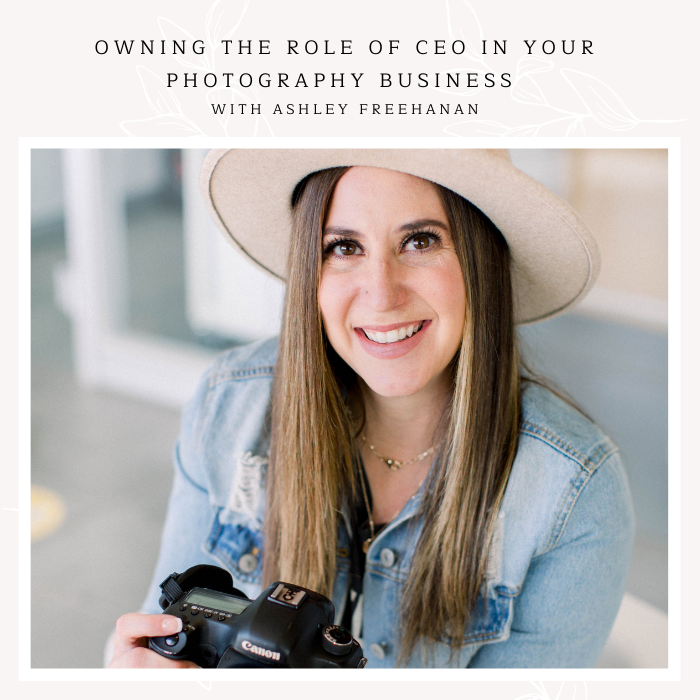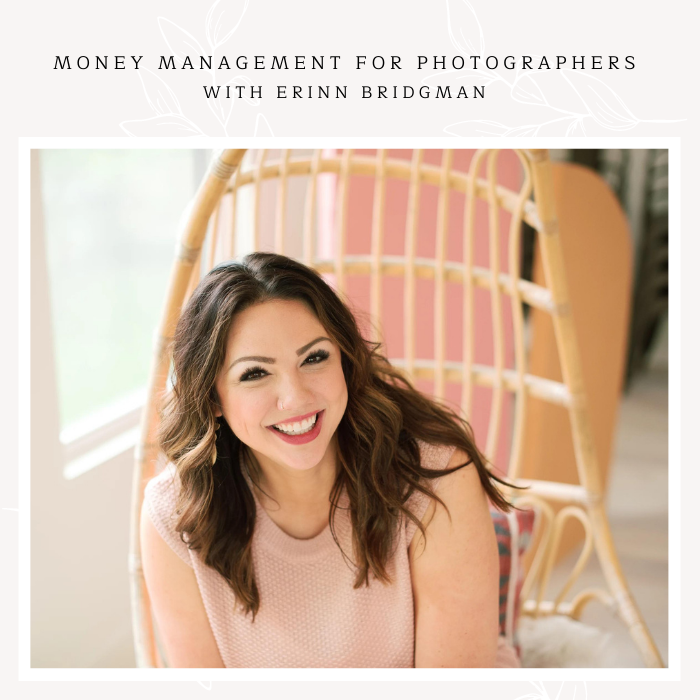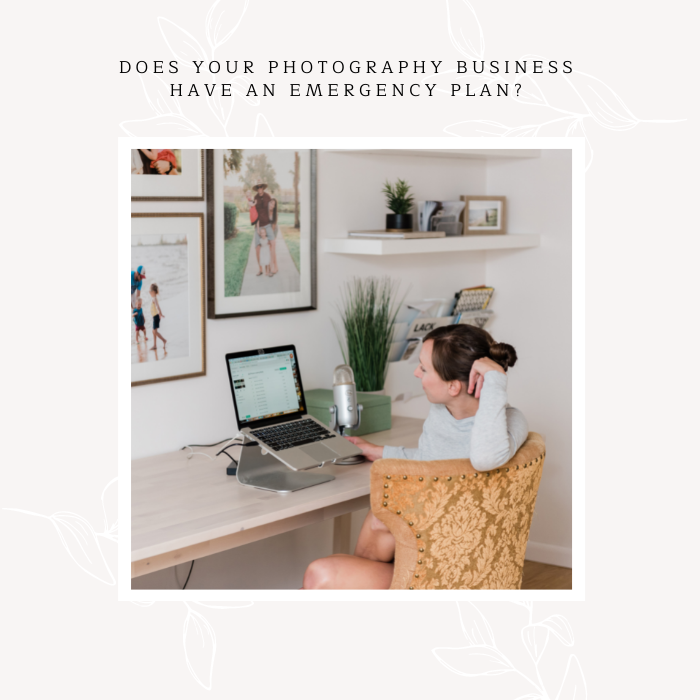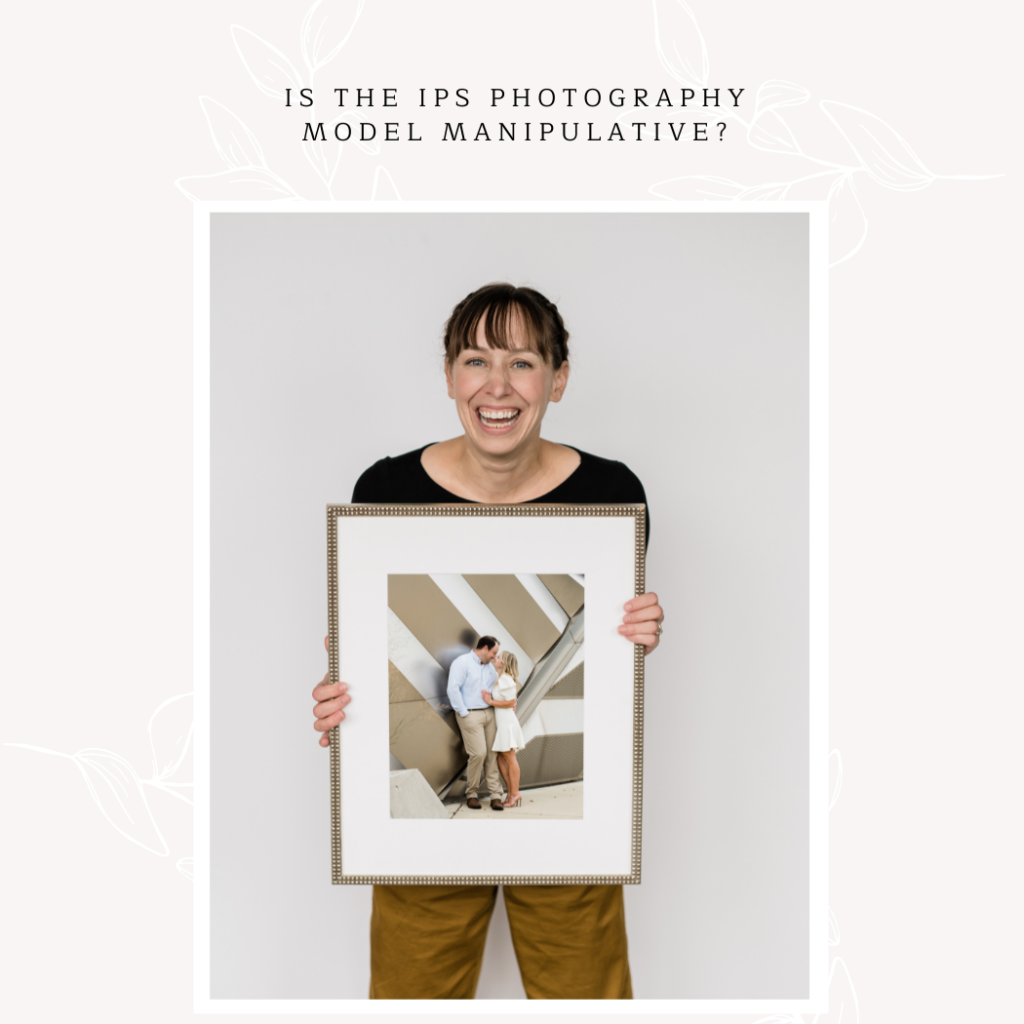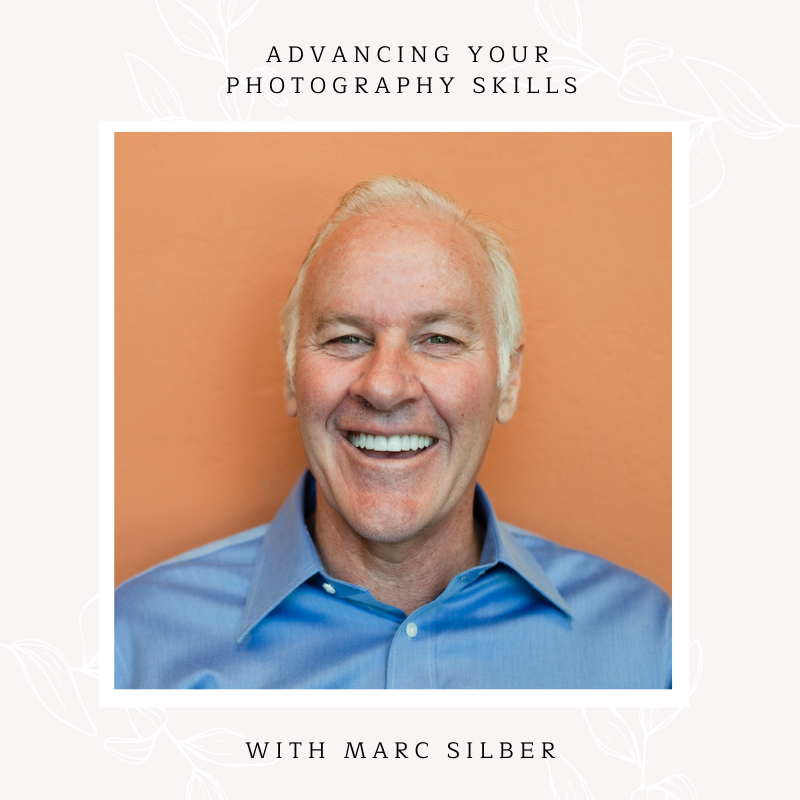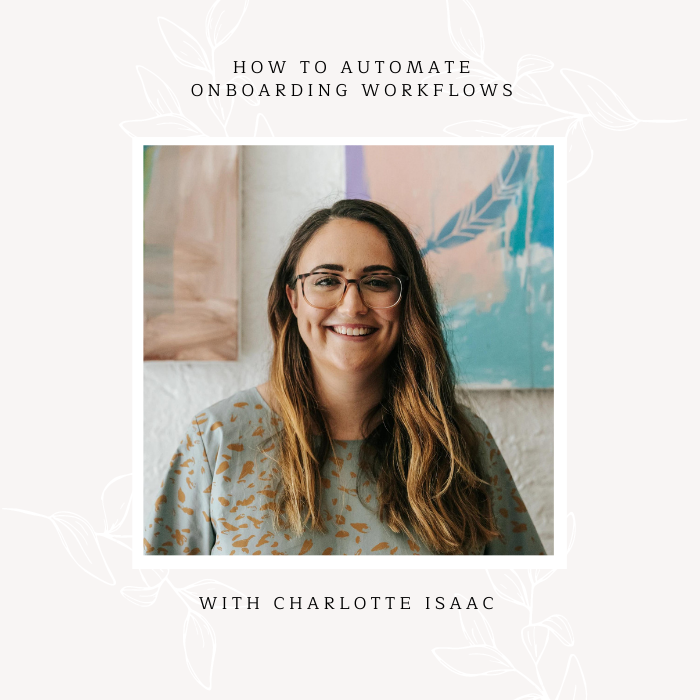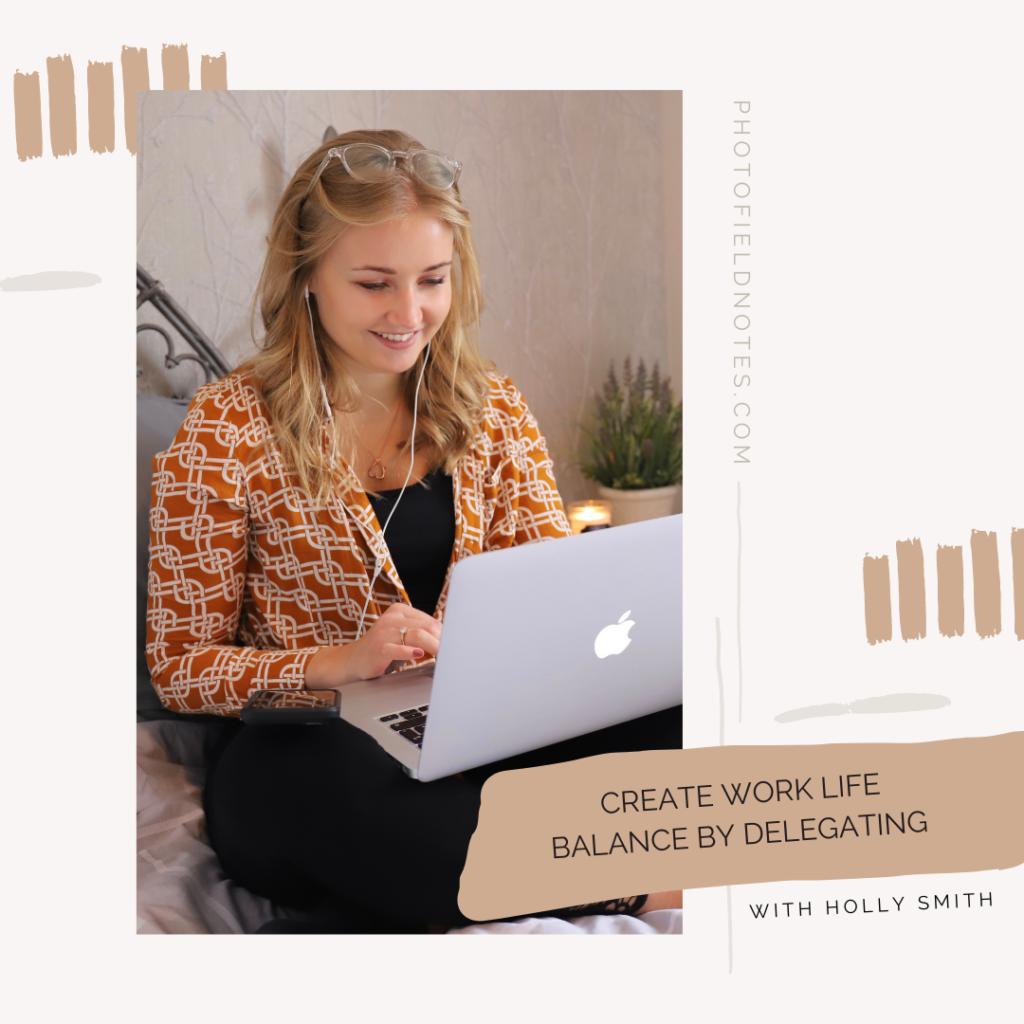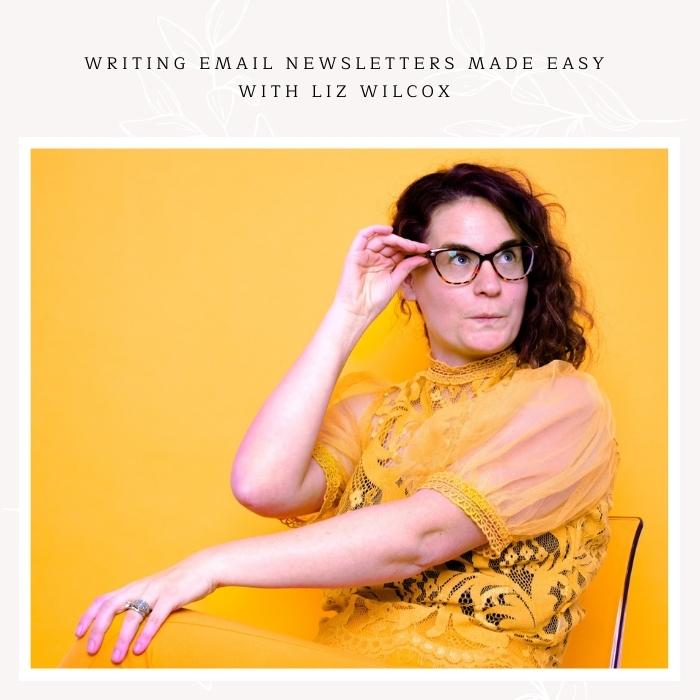
In the span of 5 years, Liz grew and sold a successful blog, got bought out of her second company, and built the third into a multiple six-figure party that just won’t quit! In other words, she now teaches online entrepreneurs to simplify the whole “email marketing thing” and finally master their sales in a way that leverages their personality, vision, and values.
Find Liz online, and get her free email swipes:
Transcript:
Allie 00:00
Hello again, this is Allie Siarto And the photo Field Notes Podcast coming back after an extended break, I spent a good chunk of the Summer Teaching study abroad through Michigan State in Italy, based in Rome, and then also in France. And then I really honestly just wanted to kind of have a low key laid back summer. So thanks to the patients of all those who I interviewed in the spring, those interviews are going to start coming out now over the coming weeks. We’re starting with Liz Wilcox on email marketing, it couldn’t be a better time as we’re getting into the fall season getting people ready for many sessions before Christmas. So let’s get right into it.
Introduction 00:36
Welcome to the photo Field Notes podcast, where you’ll find stories, tips and inspiration from professional photographers to get you taking action in your own business, and making your business dreams a reality.
Allie 00:50
Hello, everyone, this is Allie Siarto. And my guest today is Liz Wilcox, who I already know is gonna be a lot of fun. She’s an email strategist. She’s a keynote speaker, and she shows small businesses how to build online relationships and package up the magic of their businesses to turn emails that will make people want to actually read them and more importantly, that will convert into customers. And so Liz over the span of five years has listened to what she’s done. She’s sold a successful blog, she got bought out of her second company, she built her third company into a multiple six figure party that just won’t quit, you’re gonna see a lot of these fun 90s References coming in here. So now she teaches online entrepreneurs how to simplify email marketing, and how to finally master their sales within that space in a way that leverages their personality, their vision and their values. And just a fun little side. Liz lives in Florida. She loves to run snot like me. And is a walking 90s Pop Culture encyclopedia. I wish you could see Liz now, but we’ll have a photo associated so much fun. Okay, Liz, hey.
01:57
Hey, Ali, I am so excited. I love photographers. These are my favorite people. So I cannot wait to get into this. I feel like for photographers just oil or I feel like it’s it’s the simplest like business to email for. So if you think email like you’re listening or like E African right, Liz, I’m about to blow your mind. I’m
Allie 02:21
so excited. Yeah, I’m excited to get into it. So let’s first talk about your background in you had this blog, then you had a second company and your third company. So just give me like a little bit of background about why you know what you’re talking about when it comes to email marketing.
02:35
Yeah, so unlike a lot of email marketers that started off as service providers and then you know, kind of what did they say like cut your teeth get your chops, whatever the heck this thing is I’m really need to do you know, and then they started their own businesses or creating their own products. I did it backwards. I had my own blog, like Ali already said, and I was very just like you business to consumer I was selling to, you know, men in their 60s, they don’t know marketing there. I was an RV travel blogger. So these people didn’t even want to pay for, you know, electricity or a toilet. Right. So really, you know, people, I think I think it’s safe to say like skimpy with their money, right? And so a lot of the traditional ways of email marketing, the very b2b stuff was just so impossible for me to use. And so I had to, you know, over time develop my own way of doing things, and develop a real way of talking to people that weren’t marketers, just like photographers, right? If you’re a wedding photographer, you’re talking to an overwhelmed bride, you don’t want to, you know, I feel traditional. Traditional marketing will tell you, Oh, tell stories. And other than that, it’s like, okay, well, if I’m talking to overwhelm brides or people just trying to get family pictures done for the first time in 10 years, like, do they really need a story once a week or every other day? No, so I found you know, I found my footing there the same way as you know, what I was just talking about with photographers, and I saw great success, I sold an ebook, you name it, you name a product, I sold it. And what really got me turning into the email marketing was I started sharing my results. I sold a course it was probably my you know, 10th thing that I ever sold online. And I had 141 People mark their interest in the program. And so I did a traditional Monday through Friday cart close thing, and I made 141 sales. So once word got around, yeah, you can’t see ally but her eyes just got really big. And she she definitely leaned in there. Once people heard that they were like, Okay, what are you doing? That I’m not doing because As you know, average average rates are, you know, one, maybe five, maybe 10%, depending on what you’re doing. How did you get 100%. So that’s when I knew I needed to sell the blog, go all in on email marketing, and I’ve just spent the last few years, you know, learning about different businesses and really leaning into the business to consumer side. Hence, you know why Ali and I are hooked up right now, because I find my methods work super great for those types of online businesses and service providers like photographers.
Allie 05:32
Yeah, so let’s talk a little bit about what what that looks like. Because I think probably the percentage I’ve heard is one to 2% buyers, but that’s probably in like online courses specifically. So in which you are kind of doing a little bit in that photography is a little bit different, because you are selling, it’s a high value, local piece that you’re selling. But I am very curious, because that conversion, yeah, my eyes my big like, Wait a minute. And I know that I under utilize email marketing, even though I do have some automated systems set up and some things that have worked, I’d love to hear more about just like give me a bit of Tell me a little bit about your simple techniques that you are using to maybe it’s even set this up, I have a feeling a lot of photographers kind of have a a general sense of how email marketing should work. And maybe some of them have email lists of like past clients, maybe some of them have one little freebie, but I think a lot of them are way under utilizing it. So what advice do you have for those people? Like me?
06:35
Yeah, yeah. So for you and the photographer listening, what I really want you to know, is, you know, most people, and I’m sure you know, this, they pick the photographer, that’s top of mind, right? You know, I mean, sure, you might do a little bit of, you know, local Google search, or, oh, yeah, I have a friend of a friend who’s a photographer. But really the lat you know, the last person right before you buy is typically that person that you hire, right? It’s the same with a realtor, if you’ve ever bought a house, who was your realtor, like the guy that you saw the ad for when you started Googling, or, you know, maybe he was your Uber driver, he gave you a card, you know, and you, you pick, you remember that and you pick that guy, right? It’s very similar with photography, right? So I teach something called the email staircase. And you know, you get people on your email list. First, you have a follower, right? Maybe they get you on social media, you know, maybe you’re doing your thing on Tik Tok, or even you know, you meet someone locally, right at a wedding or something, give them your card, get them on your email list, right? Remember, because we’ve got to stay top of mind, we have to be ready when they’re ready, right? You know, people don’t buy when you sell something they buy when they’re ready to buy, right? So then you turn them into a friend. And I’m not talking about you know, your best friend, you share all your stories with, just like I was saying earlier, like you’re a photographer, people don’t care all that much. They just want to know if you take good pictures, and then you can turn them into a customer. So follower, friend, customer, you want to be friendly with them, you want to, you know, you want to inform them about your services about you know, a little bit of course, about who you are right, they’re not going to hire somebody that they don’t like or that they don’t agree with, no matter if you have the best pictures in town, and then just turn them into a customer when you’re ready. So in order to be a friend, quote, unquote, you’ve got to do three things. Number one, invest your time in them. Right, which of course you’re doing. You’re taking pictures, you’re investing in photography, you’re listening to this dang podcast, you know, you’re it’s very clear that, you know, you’re investing in them number two, share in a relatable way. Right. So when I had my RV blog, you can’t see it, but I’ve got in sync in the background here. I was not hearing about it and seeing my
Allie 09:08
side, no side. No, I did not properly introduce this topic. Because the way you wrote to me, which I should give full credit to is if your email campaign is tearing up your heart, you might need help. So continue. I like we’re gonna we’re gonna pull those in where we can I’ve got them written down, so help me oh,
09:25
well, I’m gonna I’m gonna Yeah, I’m gonna lean into the puns here. Yeah, so we talked about, you know, investing and then share in a relatable way. So I had that RV travel site. I was not talking about instinct, the majority of my readers, you know, almost 70% were men in their 60s. Do they care about Justin Timberlake and Lance Bass? No, they don’t you know, they don’t remember when Lance Bass came out for two people magazine. You know, that’s not something I’m sharing that’s not relatable. Maybe I was sharing about the Grateful Dead. I was sharing about my travels. You know, those are the things that They want to hear about. So if you’re a wedding photographer, maybe you’re sharing about, you know, the recent wedding you went to or your own wedding and you know, things that are relatable to them, given your specific topic, right? Like, I’m an email marketer, I’m always talking about different email things that I’m learning about. And then you want to stay top of mind. And this is most important for service providers, especially photographers, because, you know, people hire just who is right in front of their face, especially if they’re already feeling overwhelmed. You know, they’re going to do some research. Sure. And that’s where the consistent newsletters show up. But if you can stay top of mind, if you can continuously, you know, show that you’re invested and share in a relatable way. staying top of mind is like the icing on the cake. So that when you know you, hey, don’t forget, I’ve got two more spots this month, or I’m opening up spots for Easter or whatever, right? You know, oh, yeah, Alice, she’s the one I’m gonna book now, or I’m not ready yet. Hopefully, she does something for Halloween or back to school. Right? So when you do that sale, oh, yeah, I’m ready now, right. And so that’s what I want you to know, the most as a service provider, about email marketing, you don’t have to, you know, listen to a bunch of podcasts. And, you know, try to be telling all these stories, and doing, you know, weekly or daily updates, what I really want you to do is just if you can share in a relatable way, share a little bit of your personality, you know, show off your content, constantly be telling them, hey, you know, I’ve got this session, I’ve got that, you know, putting offers out there, then people people will purchase when they’re ready.
Allie 11:48
So it sounds like if we’re targeting different audiences, I mean, this kind of makes sense, of course, but I’m just gonna say it out loud. If we’re targeting different audiences, let’s say we have an existing customer list from weddings versus families, if you if you do two things, I assume you would want people to have separate email lists for the different audiences and target the relatability content toward those specific audiences.
12:12
Um, I don’t think there’s that much of a difference that you would need to do that I always err on the side of simplicity. So if the idea of segmenting your list or what she just said, is like, Oh, another thing I have to do, don’t do that. Here’s what I want you to do instead. And this is I call it my 20 minute newsletter, I don’t know extravaganza framework methodology, you know, you pick a noun, it doesn’t matter to me, just know that it’s got to be 20 minutes. So the first section of the newsletter should just be a personal update. This is about you, right, this is what’s going to separate you and make you a little more memorable than maybe some of the other lists that they’ve gotten on. Because if they aren’t doing research for family photography, you know, they want to get some portraits done, they’re in a wedding, you know, they need a brand, photographer, whatever, they do want a little bit of that personal touch, right? You’re a photographer, you’re gonna be spending hours with them, right? They want to know a little bit about you. And a personal update is just two to three sentences, something that you’ve done since the last time you emailed to show off a little bit of yourself. So it could be, Hey, I just got done. Going for a walk. I didn’t bring my camera with me. But I really wish I would have, because it was a beautiful sunset. Now they know you live somewhere that has beautiful sunsets and you go for walks, that’s just humanizing you. It’s not anything groundbreaking. You don’t have to tell a story. It’s just humanizing you. And it relates back to the photography thing. You know, it could be that you’ve got a dog and you love your dog. And oh my gosh, I’m always you know, today, I think I took 2500 pictures of my dog. She’s so cute. Anyway, and then you just segue into the real content. Anyway, what I wanted to tell you was, and if you’ve taken a new photo that your clients said you could share with people, you know, you could put that in there, if you’ve got if you just got a new lens and you want to educate people about that, you could do that, you know, whatever your main content is. And then I would suggest, and if you’ve got, if you’ve got two or more audiences, this is totally fine. You can put two or more things. Just be putting out the offer again and again, right like I’ve got two spots for my you know, my Easter photoshoot. I’ve got one spot for a wedding. I’m branching out into brand photography. Do you know someone hit reply and let me know you can put several different things, especially with a photography business where they’re not It’s not like mine, where people you know, I’m very much a personal brand. People want to know what I’m doing. They want to know where I live, they want to know what I’m eating, you know, like all these silly little things.
Allie 14:54
But I would say photographers are they’re similar. I mean, you’re you’re spending time with this person. You Want to like build their photos on them as a person? So that’s relevant? Yeah.
15:03
Yeah. But with photography, you can just continuously put offers out there. It’s not shady. It’s not gross. It’s not salesy. And they may, you know, like I said earlier, they you know, people don’t buy when you sell they buy when they’re ready. So if you do have multiple ways of, you know, taking pictures, you should put those in your newsletter probably every time if it feels good to you, so that people know, oh, well, I’m not getting married, but my friend is I totally forgot, she then did that. I’m gonna forward this, right? And you can even put language like that into your newsletters, you know, like a PSA always have a PS perhaps, versus you know, is this not the right time for you, but you know, someone who might need my services just forward this. And you can even say something, this is my personality, maybe not yours. But this is a good strategy. You know, I won’t know if you forwarded it. So no pressure either way, right? You know, because that’s the objective. Oh, well, I don’t want to you know, is this going to add some people might not be as savvy. But as simple forward could go a long way. Right. You know, especially as service providers, a lot of our stuff is referral. Right. And so that’s just a way of adding in the referral. And then the last thing I want to say is a lot of people I, I heard this from a guy called, named Justin Blackman, he calls it a super signature. And I think this is really great for photographers, it’s just a PS, when you’re ready, here’s how we can work together. And then you put, you know, three or four however many ways, you put that in the PS right, like, you know, I do brand photography, I have one session a quarter, you know, book here for q3, right? Or, you know, it’s wedding season, or I’m already thinking of wedding season 2023. You know, if if you are to click here to check out my wedding photos, portfolio, right? You know, other things like that, that way, it’s always in the PLS, like Ali said, you’re giving a little bit of personality on top talking about, you know, what you’ve done lately, you know, maybe showing a shot that you took last week, and then you’re just, you know, hey, no pressure, but here’s how we can work together when you’re ready. I think that works beautifully for photographers.
Allie 17:26
That’s nice to hear. Because I think that I in the past have probably gotten caught up thinking that if I’m going to write an email newsletter out to my photography audience, it has to be this like, mind blowing unique, how to super intense content. And I think if we look at it that way, that we have to come up with something that’s like never been seen before. And it’s going to add, like, we think if we come from that education standpoint, that it has to just be so mind blowing, it’s going to stop us from even starting, because we think, how am I going to come up with that much content. But I do think about the local businesses where I read, I tend to read their emails, and I think that they follow exactly what you’re saying. And you know, it’s not, I can read it in about 30 seconds and get a good sense. And sometimes I just delete it, and I’m not ready. Like I have a the massage place that I go to occasionally, I usually delete it. But every now and then I go, You know what? I could use a massage I’m gonna book today. Yeah, that’s what reminds me. So I think you make a good point that we should take some of that intimidation off the plate and just consider that it can be really simple. Now, let’s talk about frequency. I’m sure you get asked about this all the time. But would you say I mean, would you say just as often as you have the energy to do? Or what’s your advice to people when they ask you? How often should I be writing to my audience?
18:46
Yeah, so here’s, here’s a good framework. Number one, when someone joins your list, you’ve got to have a welcome sequence. And those are the most important emails, those are the ones you should really put some thought into. Because those are, you know, those are the onboarding. It’s that first impression, and it shares you know, about you as a person and a brand and a photographer. And then we segue into the newsletters. It depends honestly, about your business. If you tend, if you’re a wedding photographer, and you know, you’re usually booked three months in advance, or you know, wedding season is crazy for you, and it’s a feast or famine thing. You know, you have to judge for yourself when you need to send out those emails, if it’s a feast or famine thing, and you want to try to get ahead of things right then maybe, you know, sending out a weekly newsletter in those cold months, quote, unquote, would really behoove you to try to pick up some sales or get people to book for next year or whatever your end goal is. But you don’t have to send a weekly newsletter with photographers I say, um, you know, it also depends on how much competition In your space, if you know you’re the only wedding photographer who does something this way, right, like you have that unique selling proposition, you know, you might meet not need to stay top of mind as much every other week, or once a month might be good. I would evaluate, you know what kind of bookings you want how often you want to book in advance, if you’re, you know, if you’re getting bookings or not, right now, things like that. As you’re, as you’re just starting out, you don’t have a lot, maybe you email a little more frequently. And to your calendar, maybe you go to once a month, and you know, it’s a round up for, like, hey, don’t forget, next quarter, or in two months or whatever, right. But don’t think that you have to send once a week to stay top of mind, it really depends on your local market, your competition, and also what your capacity is, right? Anytime you listen to any podcast about any business, or you know anybody out there, I want you to filter it through your capacity, what are you actually capable of doing today, this month, this year, and you know, put down the rest, if you can only do once a quarter right now, well, darn it, put it in your calendar, get it out there, you know, as you build up that stamina, maybe you do more, maybe you fall in love with email, and you want to do once a week, but honestly, for photographers, I’d probably send out one newsletter a month, and then maybe a couple of follow ups. You can do things like link tracking, anyone that tracked or anyone that clicked a link, but didn’t end up booking an appointment or whatever, you could send up follow up emails, you know, week later, later, two weeks later, to you know, open up a conversation about it.
Allie 21:57
Yeah, good plan. And are you okay with talking just a little bit about just to clarify for people, we’ve talked on this podcast about like, email list building a little bit. But so a little bit about, you know, growing that audience, so one thing for photographers who have past clients, you know, being able to email past clients, I think is helpful, especially when you launch new sessions. And you can put the word out to them, Hey, you’re a returning client, guess what’s happening? But do you have any thoughts that you want to share on? Like, bringing people onto your list in the first place?
22:32
Yeah, so your best people, of course, are those past clients, you’re gonna want to ask, just ask them again, like I said earlier about, hey, can you forward this, or, you know, hey, do you know anyone and getting that conversation going, and then asking those people to be on your list? Also, what I would suggest is, what I want to say, is like list building, and visibility go hand in hand. So the more you can focus on getting your name out there making a name for yourself, the more your list is going to build. So on your website, you should have it optimized to bring in leads. So if you have some sort of freebie, you know, that maybe it’s you know, how you know how to take photos, for you know, for yourself, or, you know, I’m not an expert in photography. But your website should be optimized to, to bring in leads. So I would say, you know, you could even just very simply like join my email list, to get an understanding of my bookings. Honestly, I don’t even think a lot of photographers need like crazy freebies, you know, that he’s like, mine is crazy, you can take a look at it, you don’t need that all you need is, you know, hey, I want to know, my calendar, you know, join my email list, I’ll send you, you know, I’ll send you
Allie 24:00
like maybe the first to know about new sessions. And I guess it probably does make sense. Even in social media, you know, we’re constantly creating social media content to stay in front of people, but to because I try to have a call to action in general and social media. So if the call to action is, hey, if you really want to make sure you don’t miss it, this is where you can get on it. So I guess there’s probably more opportunities to drive that through that I’m that I’m taking advantage of right now.
24:26
Yes, I love what Allie just said, any social media if you you know, you post like Hey, want a picture like this, join my email list. That’s where I share all my updates. Always having that as a call to action. Like I said, optimizing your website you should have on your website, depending on the length of it on the homepage itself, three to five times join my list, join my list, you can go to Liz wilcox.com. I think I haven’t like six times and you can just see how I’ve placed it. I would also you know look up other photographers that you admire or law Are there some photographers see how they’re asking people to join the email list? But yes, always be, you know, on social media in your bio, your about page should lead into the email list, you know about how you got into photography, some of your, you know, best photos, you know, and then telling a story about like, wouldn’t you know, basically, wouldn’t you like pictures like this too? Or do you think we’re a nice fit? join my email list? And let’s find out, right? Something like that. It’s got to be a story that leads into hay. The next step you need to take is my email list, like getting on this list. If you look at my about page, that’s exactly it, you know, I tell the story, like I told at the beginning of this recording, and then I’m like, how do you get started, oh, you need a welcome sequence. Lucky for you, what a coincidence, that’s my opt in, right? Something like that. So for you, it would be, you know, oh, you need you need brand photography, what a coincidence. That’s what I do, get, you know, get on my account, or get on my email list to see, you know, how many sessions I have available this month. And if you’re sending out that newsletter, you know, with your availability, then you know, your art you’ve already built it in. Also, media, I know can be scary, depending on who you are. But you know, getting into your local chamber of commerce, you know, getting on the board of something, you know, maybe doing if you’re feeling bold, you know, doing a TV spot for, you know, five ways you can take the best pictures ever at your wedding, or five things that, you know, to make sure your photographer takes at your wedding that you might not have thought of, right and doing things like that writing in your local paper getting on local media, things like that are really, really going to, you know, get your face out there. And then if your homepage if your social media is all optimized for that email list. That’s the kind of funnel you need to be building not like a sales funnel within your email, but all that stuff to just get people into the list in the first place. Does that make sense?
Allie 27:14
Yeah, that’s good advice. And on the local media front, I want to just kind of reiterate, it’s, it is pretty easy to get into the local media. I’ve pitched the media about two times in the last few years. And both times the story was was shown locally. One time was pre pandemic. And one time was, even though like, okay, we’re recording this in March of 2022. And so we’re kind of in that like emerging period, I still found local media was doing zoom interviews, which is honestly like the easiest thing ever, you just sit at home, and they interview you. And then they use those clips. Although in my case, they didn’t warn me that this was the final interview, and not just a prep call. And so my daughter was like popping up behind me. And I was like, Oh, I’m one of those. But it is it is very, very straightforward to find your local media contact and put together a story that is going to be interesting to your local audience. And I think that’s Liz has really good advice with that. And like you said, just optimizing everything, I think of my homepage, and I have like the kind of the guide, the freebie that pops up. But nowhere on my site, do I just offer the opportunity to opt in just to get updates, like it’s only if you want that that information. And so it’s like, it’s sort of one of those da ha moments that I should just be having that throughout my website as well.
28:35
Yeah, I wouldn’t say it’s a dull moment, because I feel like with traditional email marketing, we do say like, you can’t just have updates, you have to have some kind of ethical bribe. But the photography business is so different, where they literally need to know what your calendar looks like, they need to know, they need to be updated. Like that’s literally what they’re looking for. So it’s totally fine to just say, like, get get on here to see my availability month to month, because especially like we we said at the top of the hour, you know, they might just be looking right now, but their wedding is in for another year. Right. So it’s like, it’s very low pressure, like, oh, okay, yeah, I’ll see what, you know, month to month. I don’t need it right now. But in a few months, I might need to so let me just get on this list while I found her because I’m never gonna remember when I actually need it.
Allie 29:26
Right. Yeah, that’s true. Yeah. And so that’s also a good reminder to photographers. But there are some great booking calendars that you can use where you can launch that I just sent out an email to my list, the first in a long time, launching my calendar, announcing that my calendars live through a certain number of months. And so that’s such an easy thing to announce, like, hey, it’s a lot it’s alive. You can go on you can book and I happen to do some of the same things like showing just a few personal updates, because I know a lot of them. So I think that your model makes it really simple and achievable and less is intimidating. And I think that this is something that we can all apply to our businesses as photographers. So I thank you for that, Liz.
30:08
Yeah, you’re welcome. I’m so excited. And Ali said something awesome just now. And she said, like, oh, I updated them about my calendar. Anytime something is moving in your business. Update your people about it. Like I do this really, really, super often. Like, last week, I had a launch. So my newsletter this week was all about the how the launch went all the details, right. And so if you’ve got a wedding, you know, you could email talking about the wedding, what you liked about it, what you wish, would have done better how you’re improving, getting that behind the scenes look, is so awesome. And then getting those updates of oh, I updated my calendar, I’ve been meaning to do this for ages. It humanizes you, but it also keeps them in the loop. People love those updates. And it’s without, you know, having to have this like Allissa this profound or super valuable email that, you know, kind of freezes you at the keyboard, just hey, I added this to my site, or I update, you know, I just updated the calendar, go take a look, see if anything works for you. Or oh, I just did my first my first holiday shoot, I’m thinking of adding more would you be interested? hit reply, let me know. You know, here’s a here’s a picture from that. What do you think about it? Stuff like that. Just really simple. The same way you will connect with a friend like if, if we were both into photography, and you were like, hey, what do you think about this? Or oh my gosh, I just updated my calendar or I listened to this podcast and now look at my homepage or whatever, you know, stuff like that people. People love it. It connects very quickly. They can read it, like Ali said 30 seconds. And then when they’re ready to book Oh, yeah, I’ve seen. I’ve seen for the last year I’ve been seeing her, you know, she did wedding, she branched out into holiday. She finally got the calendar of her dreams on her site, or whatever. I’m ready to book I’m finally getting married. They finally pop the question like this is the person right?
Allie 32:13
Yeah. And it could be as simple as like, Hey, did you notice that the buds are on the trees, it’s almost spring or like fall, leave watch in the winter in the fall, or we’re just waiting for the colors. I mean, hopefully they’ve already booked by then or like magnolia tree bloom watch. Like, even if you’re already booked for that time. It’s just that little thing like, hey, reminder, these things are in bloom, it’s time I have a few spots if you want to get in front of like this beautiful magnolia tree. So you’re right, there are such easy, simple opportunities all around us. And it doesn’t have to be this like deep mind, you know, mind blowing topic every single time that I think some of us, myself included, have intimidated ourselves into thinking it has to be alright. Well tell people where they can find out more about what you have find you online, find your website and check out these these opt ins that you have.
33:03
Yeah, sure. So I’m an email marketer, obviously, I want you to get on my email list. And I give you full permission to get on the list and take anything I send you and make it your own. I do personally even though I’m not a service provider, not a photographer, I do what all those things I was telling you about that personal update, you know, maybe some main content, that super signature, I’m constantly experimenting also with the email list, trying new strategies. And it’s all very meta. It’s all like, Hey, I did this, like side note, that paragraph was x, use x and your next whatever. So I’d love for you to get on the list. And especially because you can go to lists wilcox.com in the hot or in the left, I’m sorry, I’m going to start that over. Go to Liz wilcox.com. In the top right hand button, there’s a hot pink button. And you can click that you can get an entire welcome sequence because the main thing I want you to learn from email marketing is you’ve got to have that solid foundation, and you build it with a welcome sequence so that people will open up all those newsletters we’ve been talking about. So I’ve already written that for you. You can go you can get it it’s a hot pink button. It says free email swipes, you’re gonna get ones that are already written for you, it’s going to really help you. You also get three newsletter examples. So all those newsletters that we were talking about, you can see those how they would actually look and you get 52 subject lines so you never have to you know come up with an idea from scratch all for free. And also I know you’re a photographer so you love images. You can catch me on Instagram at the Liz Wilcox that’s my handle. Th e Liz Wilcox. But either way, I can’t wait to see what you do with email. Thank you so much, Allie for having me.
Allie 34:51
Thank you Liz. All right, check out the all those links will be in the show notes too. And I hope you all find some actions you can take from this. I think it’s definitely helped Well, I appreciate it.
35:01
Thank you.
Outro 35:03
Thanks for listening. check out show notes at photo field notes.com. And if you loved this episode, leave your review on iTunes. See you next week.
